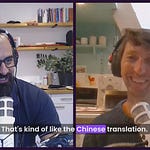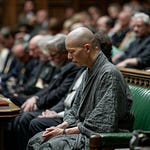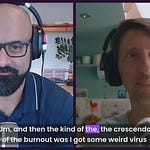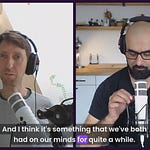In episode 13, we explore a deceptively simple question: do we need to disconnect to reconnect? But as we quickly discover, it’s not so straightforward — what exactly are we disconnecting from, and what are we trying to reconnect to?
The conversation weaves through personal experiences and bigger questions about modern life. Tom shares insights from a recent Reiki course where he experienced an unusual depth of human connection, which made him wonder: why isn’t this normal? Why do we have to seek out special experiences to feel truly present with other people?
We dig into the paradox of digital connection — we’re supposedly more connected than ever through email, social media, and video calls, yet mental health problems continue rising and society feels increasingly fragmented. Email becomes a burden rather than a joy. Social media feels more like an addiction than genuine connection. Even video calls leave us exhausted in ways that in-person meetings don’t.
Using Asim’s vivid metaphor of “threads” of attention, we explore how our focus gets pulled in dozens of directions simultaneously — WhatsApp notifications, unfinished email conversations, social media feeds, news cycles— leaving us perpetually distracted and unable to be fully present anywhere. It’s not just about being busy; it’s about having mental residue from incomplete conversations and unresolved threads constantly running in the background.
Our discussion takes an interesting turn as we compare different types of connection to food. In-person interaction is like whole foods — rich, nourishing, full of layered information through body language, energy, and presence. Digital connection, especially social media, is more like white bread or Doritos — highly processed, easy to consume in large quantities, potentially addictive, but ultimately leaving us feeling worse despite the momentary pleasure.
We go on to explore why physical presence matters so much. Drawing on psychology research, Tom explains how Zoom calls create a dissonance between what your brain thinks is happening (you’re with someone) and what your body knows (they’re not actually here), leading to that peculiar exhaustion many of you will recognise. There’s something about bioelectric fields, subtle energies, and the quality of information transfer that simply can’t be replicated digitally.
The conversation touches on historical shifts too — from the last town to get television (which promptly saw all its social clubs close as people stayed home watching TV) to how the pandemic forced different kinds of disconnection and reconnection, with wildly different impacts depending on your circumstances.
Towards the end, we land on a practical framework: maybe we need to actively track and measure connection quality, similar to how we track physical fitness. What if we scored different interactions — not by duration, but by how nourished or depleted they leave us feeling? A thoughtful hour-long conversation with a friend might score thousands of points, while hours of YouTube shorts might barely register despite consuming far more time.
This episode offers no easy answers, but it does suggest something important: in our pursuit of endless digital connectivity, we may be sacrificing the deeper, richer forms of connection that actually nourish us. The challenge isn’t abandoning technology, but being more intentional about seeking out high-quality connection — the whole food connection instead of the junk food.
As mentioned in the podcast, Tom previously proposed his '“Disconnect to Reconnect Manifesto” in episode 29 of Gillian Burke’s podcast, If I Ruled The World, which you can listen to here.
Thanks for listening. Please do share this episode with anyone who may find it interesting, and join the conversation with us by leaving a comment below.












